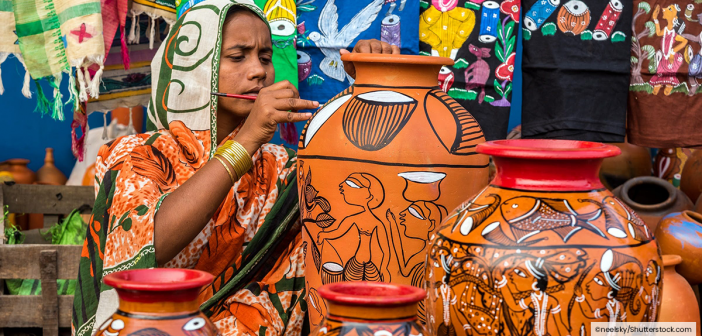India boasts a rich tapestry of handicrafts and artisanal products, with a long and storied tradition of skilled craftsmanship passed down through generations. From the intricate embroidery of Kashmir to the hand-woven silks of Kanchipuram, Indian artisans create masterpieces that are coveted worldwide. However, despite this immense potential, Indian sellers remain underrepresented on global online marketplaces like Shopify and Etsy. This article explores the reasons behind this underrepresentation and suggests ways to bridge the gap.
A Global Marketplace, an Uneven Playing Field
Platforms like Shopify and Etsy offer a gateway to a global audience for artisans and small businesses. Theoretically, Indian sellers should be ideally positioned to capitalize on this opportunity. However, the reality paints a different picture. While there are success stories, Indian sellers represent a fraction of the total vendors on these platforms compared to their global potential.
Challenges Faced by Indian Artisans
Several factors contribute to this underrepresentation. One key challenge is a lack of digital literacy among many artisans, particularly those in rural areas. Limited access to computers, the internet, and training in e-commerce operations creates a significant barrier to entry. Additionally, navigating the complexities of setting up an online store, product photography, and online marketing can be daunting for those unfamiliar with the digital world.
Beyond Technology: Obstacles in Infrastructure and Logistics
Even for tech-savvy artisans, logistical hurdles pose a significant challenge. India’s vast size and complex internal logistics network can make it difficult and expensive to ensure timely and reliable delivery of products to international customers. Furthermore, navigating customs regulations and international shipping procedures can be a complex and time-consuming process for small businesses.
Financial Hurdles: Limited Access to Capital
Many Indian artisans operate on a small scale, often lacking the financial resources to invest in high-quality product photography, professional website design, and targeted online marketing campaigns. Microfinancing options and government initiatives aimed at providing financial support to small businesses can play a crucial role in bridging this gap.
Standing Out in a Crowded Marketplace
Competition on global e-commerce platforms is fierce. Indian sellers need to effectively showcase the unique qualities of their products to stand out from a sea of international offerings. Investing in high-quality product descriptions, storytelling that captures the cultural heritage of the craft, and leveraging social media marketing to build brand awareness are crucial steps in this direction.
The Need for Government and Industry Support
To bridge the gap and empower Indian artisans to thrive on global platforms, a collaborative effort is required. Government initiatives can provide training programs in digital literacy, e-commerce operations, and international trade practices. Industry bodies can offer mentorship programs connecting established online sellers with aspiring artisans. Additionally, streamlining logistics processes and simplifying customs regulations can significantly ease the burden on small businesses.
The Power of Collaboration: Artisan Collectives and Aggregators
Collaboration can be a powerful tool for Indian artisans. Forming artisan collectives allows them to pool resources, share knowledge, and negotiate better deals with shipping companies and online marketplaces. Additionally, online aggregators specializing in Indian handicrafts can play a crucial role in curating high-quality products, ensuring consistent quality control, and providing marketing and logistics support to individual artisans.
A Bright Future Beckons
Despite the challenges, the potential for Indian artisans to flourish on global e-commerce platforms is undeniable. With the right support system, increased digital literacy, and a focus on quality and branding, Indian sellers can transform this underrepresentation into a position of prominence. By showcasing the unique treasures of Indian craftsmanship to the world, online marketplaces can not only empower artisans but also contribute to preserving and promoting India’s rich cultural heritage.





